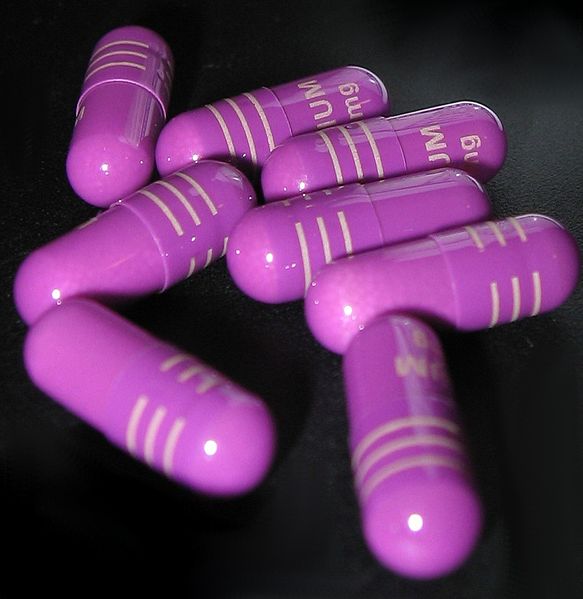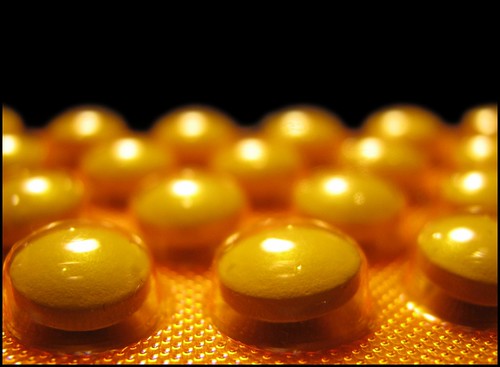Think Nexium, the acid reflux disease drug, otherwise known as "the purple pill"

or Pfizer's Viagra, a male impotency pill, with it's distinctly blue hue.

One company that creates colored coatings for medicine, has developed a library of more than 200 pill colors — including "cheesecake" beige, "wasabi" green and "bubble gum" pink.
The coatings, which come in powdered form, are edible and regulated by the federal Food and Drug Administration. They are made primarily of cellulose, a plant-based material derived from either wood pulp or cotton.
Here's another pill-coating company's description of its color-services:
Color CoatingsInteresting! I always knew that the psychology of color came into play in developing products for the market place, but this gives you a better idea of how important color's role really is.
Color is a critical branding element used in solid dose, pharmaceutical product design. It serves to distinguish a product while influencing the physical and emotional perceptions with physicians, pharmacists and patients. Emotional preferences affect brand preferences, resulting in greater market share gain.
For example, color can be used to visually distinguish different dosage strengths of a drug, in addition to providing an easy method for recognizing a specific medication. Chronically ill patients and older individuals may be taking six or more different tablets daily. In these situations, easy distinctions between drugs can be critical.
Color is important in: • differentiating pharmaceutical product dosages • reducing medication administration errors • enhancing patient compliance • strengthening brand identity • establishing trademarks image source
A number of different studies link color with perceived therapeutic efficacy, site of action and drug strength. Color impacts perceptions of efficacy and relates to the potency of the dose. For example: darker to lighter colors = stronger to weaker dosages.
article via Asbury Park Press


